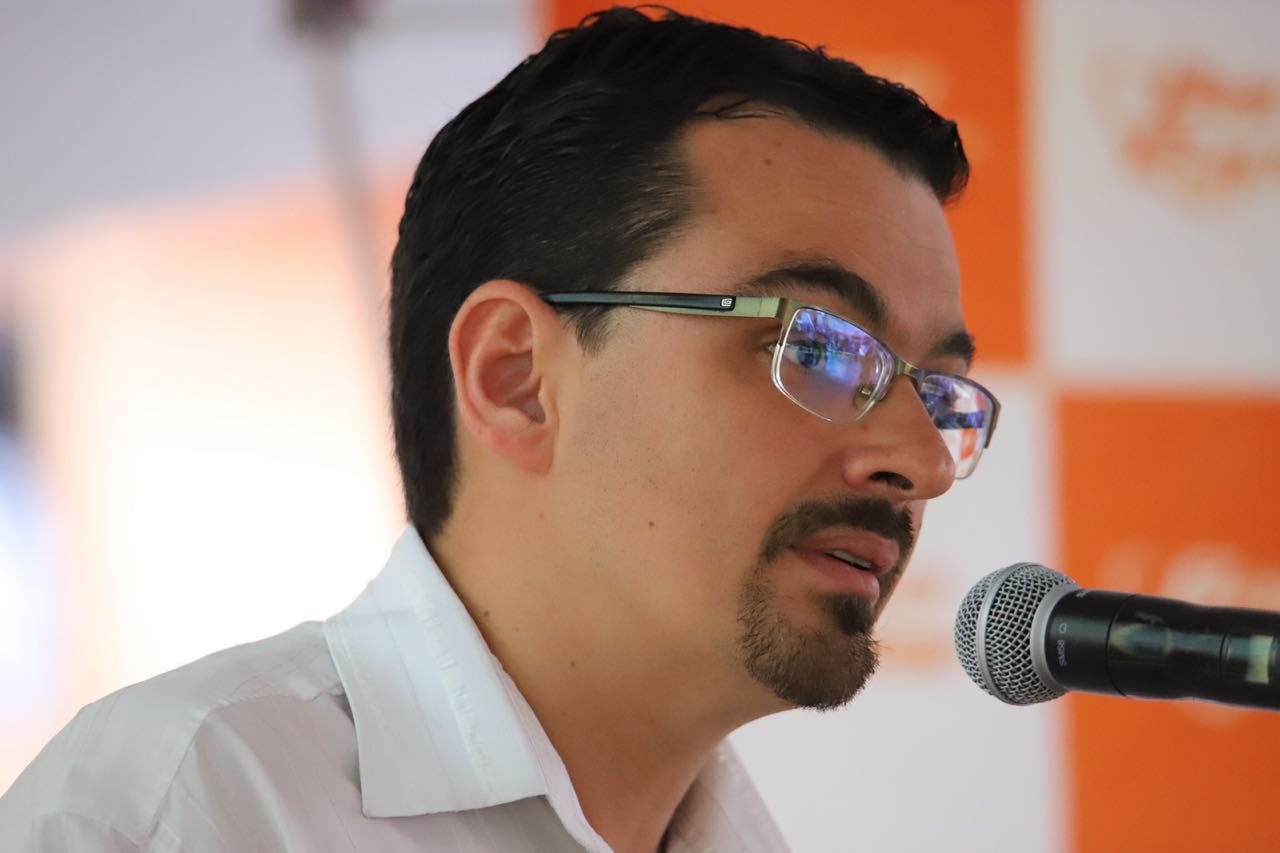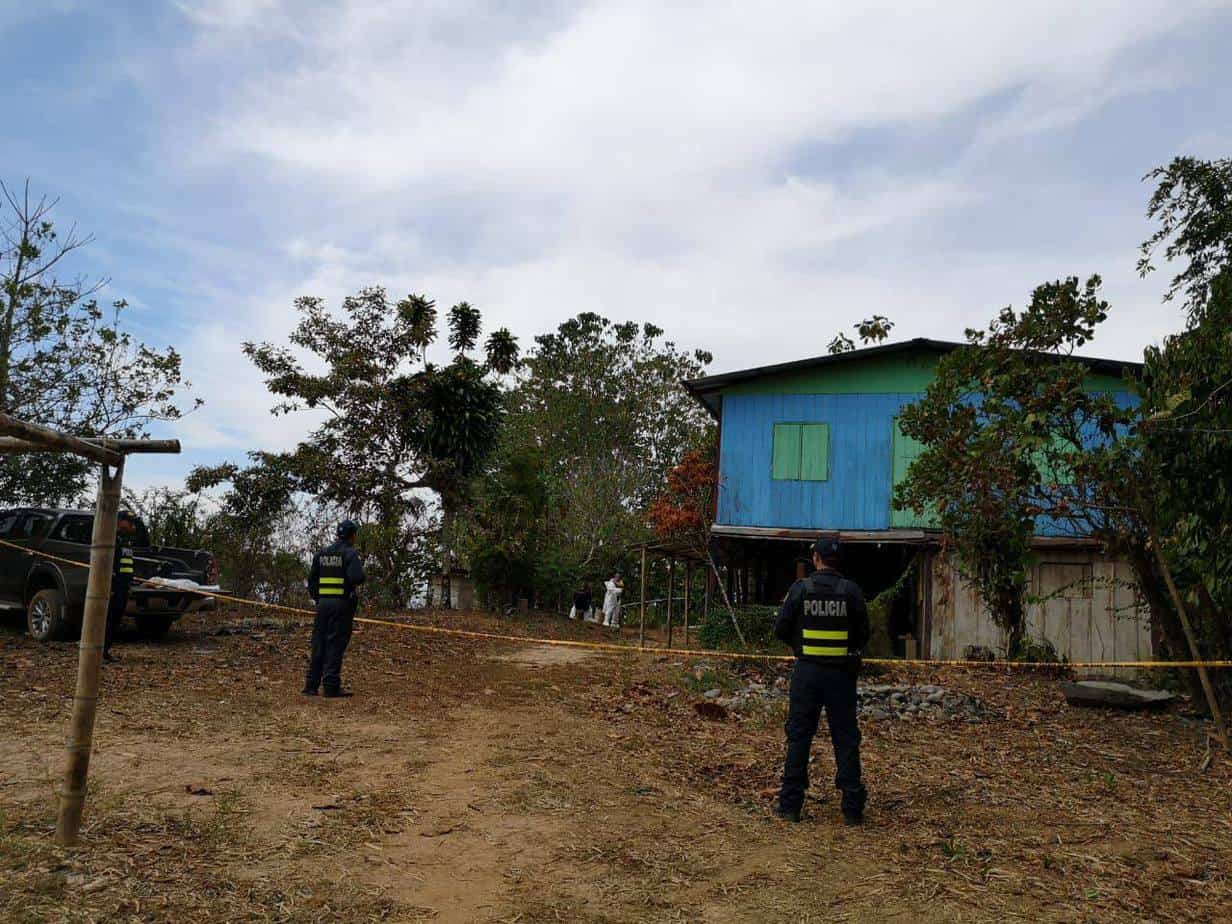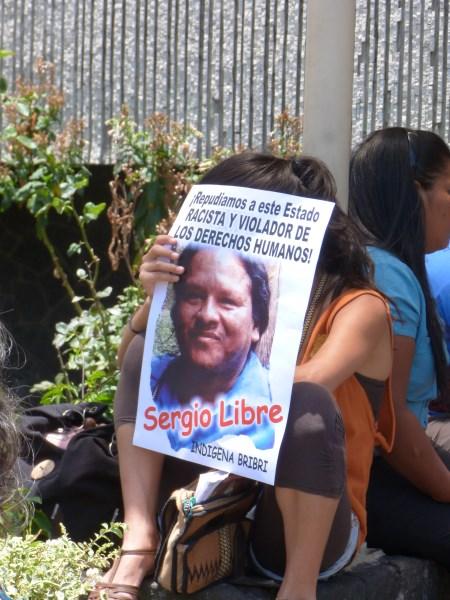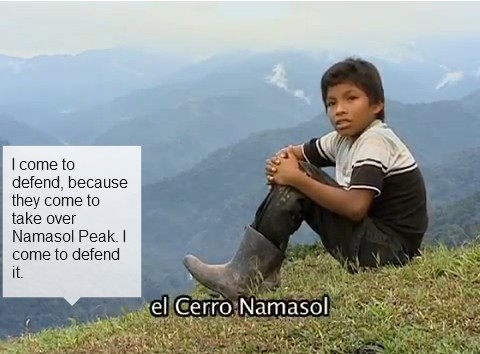Latin America
Related: About this forumIndigenous land activist shot dead in Costa Rica
Source: Reuters
Indigenous land activist shot dead in Costa Rica
Alvaro Murillo
2 MIN READ
SAN JOSE (Reuters) - Unknown attackers shot dead a well-known Costa Rican activist who defended land for the Bribri indigenous people in the Central American country, the government said on Tuesday.
Sergio Rojas was at his home in the indigenous territory of Salitre, about 200 km (124 miles) south of the capital, San Jose, when the attack happened late on Monday, the office of President Carlos Alvarado said in a statement, calling the killing “regrettable.”
Costa Rica has 24 indigenous territories inhabited by eight ethnic groups, with occupation and encroachment on their land by ranchers causing conflict since the 1960s.
Rojas had survived at least one previous assassination attempt. In 2015, the Inter-American Court of Human Rights ordered the government to provide Bribri and Teribe people with protection, arguing they were at risk because of actions taken to recover their lands.
-snip-
Read more: https://www.reuters.com/article/us-costarica-activist/indigenous-land-activist-shot-dead-in-costa-rica-idUSKCN1R02HI

gtar100
(4,192 posts)and they know they have no integrity and can only hold positions of power through brute force. I'll repeat that...their ideas are shit and they know it. Assholes.
Judi Lynn
(160,525 posts)Judi Lynn
(160,525 posts)Villalta: Murder of Sergio Rojas is in all likelihood a political crime
"And the Government of the Republic is responsible because, despite the repeated threats, it did not protect it."
March 19, 2019 Karla Pérez González

San José, Mar 19 (elmundo.cr) - The FA deputy, José María Villalta, called the murder of the Bribri leader, Sergio Rojas, a "political crime".
Rojas, a recognized indigenous leader, was hit yesterday by fifteen bullets in the community of Salitre, Puntarenas.
According to the Ombudsman's Office, there is a precautionary measure issued by the Inter-American Commission on Human Rights to guarantee the life and safety of Bribris indigenous people. A protocol was prepared in the previous administration, but they are still pending compliance.
"They would have killed him to silence his struggle for human rights. And the Government of the Republic is responsible because, despite the repeated threats, it did not protect it. Yesterday the security minister, Michael Soto, made comments in the Assembly that delegitimize and belittle the struggles of indigenous peoples, "added the legislator.
Villalta demanded an independent investigation and zero impunity in this case.
"Justice for Sergio Rojas and the town of Salitre!", Concluded the Frente Amplio.
https://www.elmundo.cr/costa-rica/villalta-asesinato-de-sergio-rojas-es-con-toda-probabilidad-un-crimen-politico/
Judi Lynn
(160,525 posts)‘A tragic day for the Bribrí people’ as leader Sergio Rojas is killed
Alejandro Zúñiga
March 19, 2019

MSP officers maintain a presence at the location of Sergio Rojas's apparent murder. (Via Casa Presidencial. )
Sergio Rojas, a leader of the indigenous Bribrí community in Costa Rica, was murdered Monday night, the government confirmed.
Rojas was shot to death in an apparent assassination at his home in the indigenous territory of Salitre, in the Buenos Aires canton of Puntarenas. An investigation into the murder has been initiated, led by the country’s Judicial Investigation Police (OIJ) with collaboration with National Police.
. . .
Costa Rica has for years struggled to protect indigenous communities from violence by non-indigenous people. The conflict stems in part from a 1977 law that gave the Bribrí and the Teribe rights to 11,700 hectares of land but did not allocate funds to compensate non-indigenous farmers who already occupied the land.
As The Tico Times has reported, indigenous communities have repeatedly complained to the Costa Rican government about inadequate protection from attacks. In 2012, Rojas was shot at six times in an apparent assassination attempt near the reserve.
More:
http://www.ticotimes.net/2019/03/19/a-tragic-day-for-the-bribri-people-as-leader-sergio-rojas-is-killed
Judi Lynn
(160,525 posts)
Earlier article:
Freedom of Sergio Rojas Ortíz. Indigenous Bribrí of the town of Salitre, Costa Rica
Julio Vega May 23, 2015

"They are killing me slowly," said Sergio Rojas Ortíz in an interview that was broadcast today on Radio 8 de Octubre. An indigenous prisoner for defending the land. In a country that boasts of democracy.
For more than 30 years, Costa Rican laws have established that indigenous territories are exclusive to the indigenous population and that any possession by non-indigenous landowners or landowners is illegal.
When the indigenous people of Salitre began to claim their right to the territory, not only there were strong aggressions on the part of landowners, finqueros and their peons, but the Costa Rican State itself made visible which side it is when it comes to the indigenous territories.
The imprisonment of the president of the Indigenous Development Association that had backed the land intakes is an example of this.
But so is total impunity for cases of aggression against indigenous people, which include night attacks with machetes, burning of ranches, intimidation and wounding with firearms, persecution by the mountain, among others.
Today we received the news that Sergio will regain his freedom, by annulling the precautionary measures that kept him prisoner without trial.
. . .
https://carlosagaton.blogspot.com/2015/05/libertad-de-sergio-rojas-ortiz-indigena.html
Judi Lynn
(160,525 posts)of a person people in power want to use to send a message to leaders and all potential leaders or followers.
This act against humanity is especially filthy.
Costa Rica: Indigenous peoples suffer violent attacks for demanding recognition of their land rights
. . .
Over the past year indigenous peoples and their leaders have been attacked just for demanding the protection of their land rights. Since February 2012, racial hatred and tension against indigenous peoples has resulted in the attempted murder of two indigenous leaders (Pablo Sibas Sibas of the Teribe people and Sergio Rojas, leader of the Bribri of Salitre) and severe injury to over twenty people. The attempt on Sergio Rojas’ life was partly instigated by the Municipal Council of Buenos Aires who declared him persona non grata. As recently as 6 January 2013, three unarmed and peaceful Bribri members of Salitre, who participated in the recovery of illegally occupied lands within their territory, were attacked at midnight by armed non-indigenous assailants. Wilbert Ortiz was shot in the leg, Marcos Obando Delgado was stabbed with a machete leaving him with deep lacerations and two severed fingers and Mainor Ortiz Delgado was also stabbed with a machete and tortured with a hot iron rod, permanently scarring his chest. Undoubtedly, these attacks have caused severe physical and psychological trauma.
. . .
https://www.forestpeoples.org/en/topics/rights-land-natural-resources/news/2013/02/costa-rica-indigenous-peoples-suffer-violent-attac


BRIBRI
The Bribri, located in the mountains and low-lying coastal areas of southern Costa Rica and northern Panama, are the original inhabitants of Talamanca.
The Bribri are sometimes referred to as “the hidden people” because of their extreme isolation from Costa Rica’s public life. [1].
Fortunately, that isolation has allowed the Bribri to maintain their language, culture and their economy. The Bribri are agriculturalists; and with more than 120 wild and domestic crops, they are relatively self-sufficient. [2]
There are four Bribri reservations in total: the Talamanca Bribri and Këköldi on the Atlantic watershed, and the Salitre and Cabagra on the Pacific watershed.
The Bribri’s population on reserve is about 11,500; although, according to some estimates, their true population is closer to 35,000.
https://intercontinentalcry.org/indigenous-peoples/bribri/
~ ~ ~
BriBri communities are rejecting a new government proposal to permit U.S. military incursions onto their lands in the remote area of Alto Telire in the county of Talamanca, Costa Rica.
Last month, the mayor of Talamanca, Melvin Gerardo Cordero, requested permission from Costa Rican President Laura Chinchilla to esablish a “humanitarian bridge” that would rely on Southern Command (SOUTHCOM), the arm of the U.S. Department of Defense responsible for all U.S. military activities throughout Central and South America and the Caribbean.
. . .
In a recent interview with Radio Ceiba, Bribri leader Leonardo Buitrago condemned the proposal, arguing that such an action would threaten public safety and serve to militarize Bribri territory. Buitrago went on to express grave concern that SOUTHCOM has helped to dispossess Indigenous Peoples of their lands in other countries.
https://intercontinentalcry.org/indigenous-peoples/bribri/
~ ~ ~
Clearly the land legally belongs to the Bribri people. The government has acknowledged it, put it in writing, but will NOT protect the people who have lived on the land since ancient times. Information on the Bribri's recent struggle starts on page 29:
F. The Situation of the Bribri of Salitre
. . .
In July 2012, the Bribri of Salitre, led by one of their leaders, Sergio Rojas, organised a
peaceful recovery of lands illegally occupied by non-indigenous persons in Cebror, a location in
their titled territory. This provoked a furious reaction by non-indigenous persons and resulted in
a number of threats made against indigenous leaders. For example, the press reported that in a
meeting held in Buenos Aires, a nearby town, on 9 September 2012, 500 mostly illegal occupants
of lands in indigenous territories met with state authorities, including a Member of Congress. They
angrily made statements explaining that violence and deaths would occur if the indigenous people
persisted with the recovery of lands. One person, supported by many others, shouted that “the
government must make a commission to deal with this emergency before blood is shed; some of
the owners of the lands can’t take it anymore….”107
A few weeks earlier, the Buenos Aires Municipal Council, a local government body with
jurisdiction over the canton (and six indigenous territories, including Salitre and Térraba), had
inflamed the situation. In particular, the Municipal Council adopted an official resolution declaring
Sergio Rojas persona non grata because of his leadership in the recovery of lands in Salitre. Among
other things, the resolution declares“Sergio Rojas Ortiz, persona non grata in the Canton of Buenos
Aires, for psychological aggression against the Costa Rican citizens born in our location….”108 The
resolution was widely disseminated in the local media. Leaving aside the legality and propriety of
an official organ of the state formally declaring an indigenous citizen persona non grata for doing
no more than asking that his people’s rights, as guaranteed by both domestic and international
law, be respected, this decision empowered persons hostile to indigenous peoples to undertake
violent actions, including, as noted above, the attempted assassination of Sergio Rojas. The national
authorities have done nothing to date to ameliorate this situation, nor to sanction the Municipal
Council for its discriminatory resolution and the climate of hostility it engendered.
Notwithstanding the Municipal Council’s action and the above described meeting, on
30 September 2012, the Bribri of Salitre hosted a meeting of indigenous leaders from southern
Costa Rica in one of the properties that had been recovered from illegal occupants in July 2012.
This meeting was quickly disrupted by a group of non-indigenous persons carrying tools and firearms. While the indigenous leaders were away viewing a number of
other recovered properties, the non-indigenous persons constructed
barbed-wire and cattle fencing around the property of the meeting
venue. This was immediately reported to the authorities by the Bribri,
including the local police in Buenos Aires. However, even with the
police present, an indigenous person was attacked and sustained a
serious head injury. The local police did nothing to intervene. This led
to a three day-long conflict between indigenous people and illegal
occupants, which required the presence of the head of the Office of
the Ombudsman, the Minister of Security, the Attorney General Officer
for Indigenous Issues, over 20 regular police officers and a detachment
of the special anti-riot police to restore order.
In January 2013, indigenous peoples’ fears about further and increased violence were
realised in Salitre. At midnight on 6 January, a band of non-indigenous illegal occupants attacked
a group of unarmed and peaceful Bribri persons, resulting in severe injuries to three individuals.
Marcos Obando Delgado was attacked with a machete and lost the use of three fingers; Mainor
Ortiz Delgado was also severely injured with a machete, suffering a number of deep lacerations, and
was tortured with a hot iron on his chest, resulting in severe physical and psychological trauma; and
Wilbert Ortiz Delgado was shot in a leg and suffered a number of head wounds after being attacked
with a machete.109 This organised and planned attack was in retaliation for the victims’ participation
in actions held on 3 January 2013 to reclaim lands within their titled territory, specifically a property
of approximately 30 hectares located in Río Azul, Salitre.110 The Costa Rican state’s Office of the
Ombudsman and the United Nations country office issued a joint press release condemning the
acts of violence and urging the state to take all necessary measures to ensure the life and physical
integrity of all people involved in the conflict. They called for “these situations to be solved by
peaceful means, within the legal framework and guaranteeing the rights of indigenous persons to
their territory.”111 There has been no official reaction by the Costa Rican state to date and none of the
attacks has been formally investigated by state authorities.
https://www.forestpeoples.org/sites/fpp/files/publication/2014/02/violationsterritorialrightscostaricaenglishfeb2014.pdf
